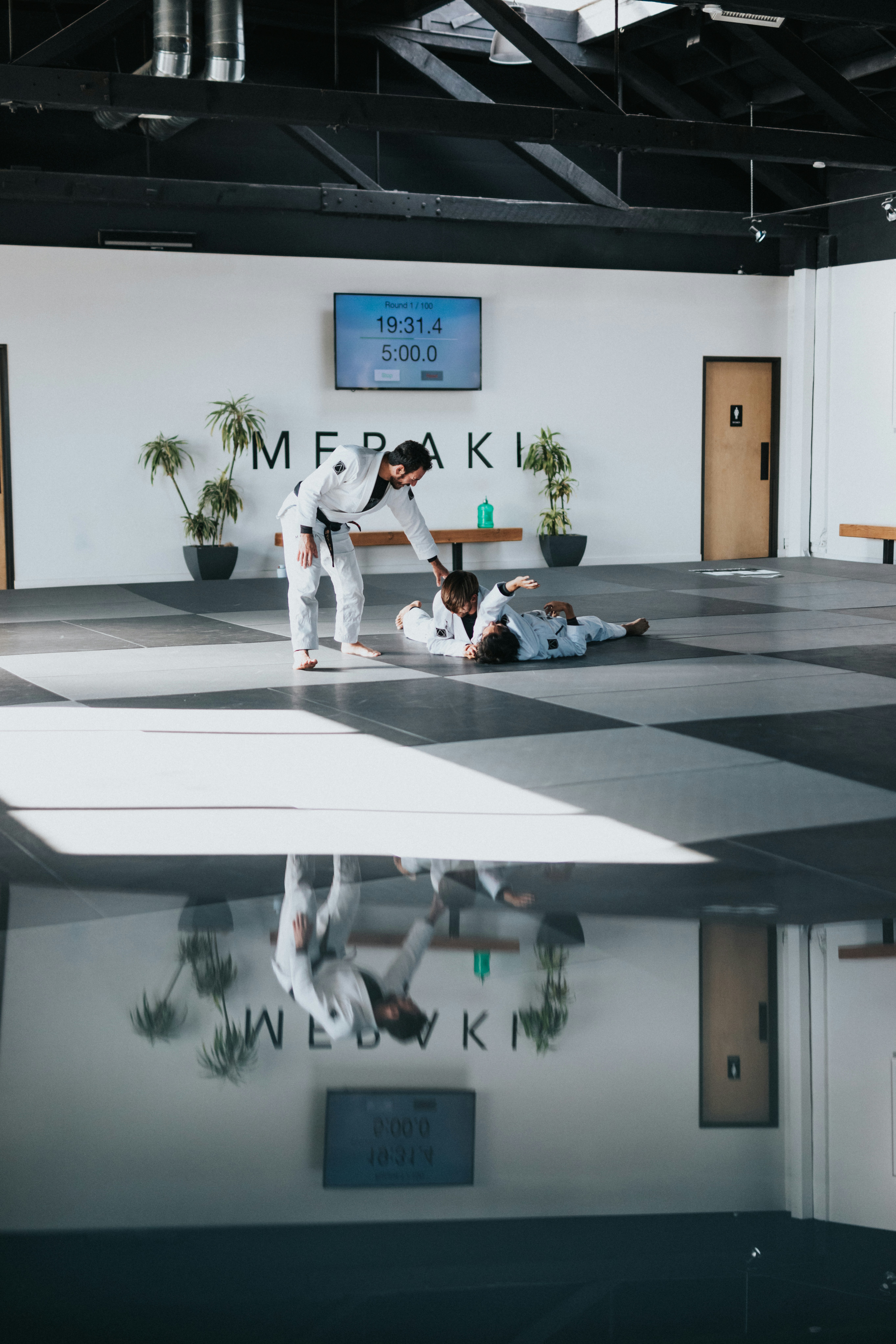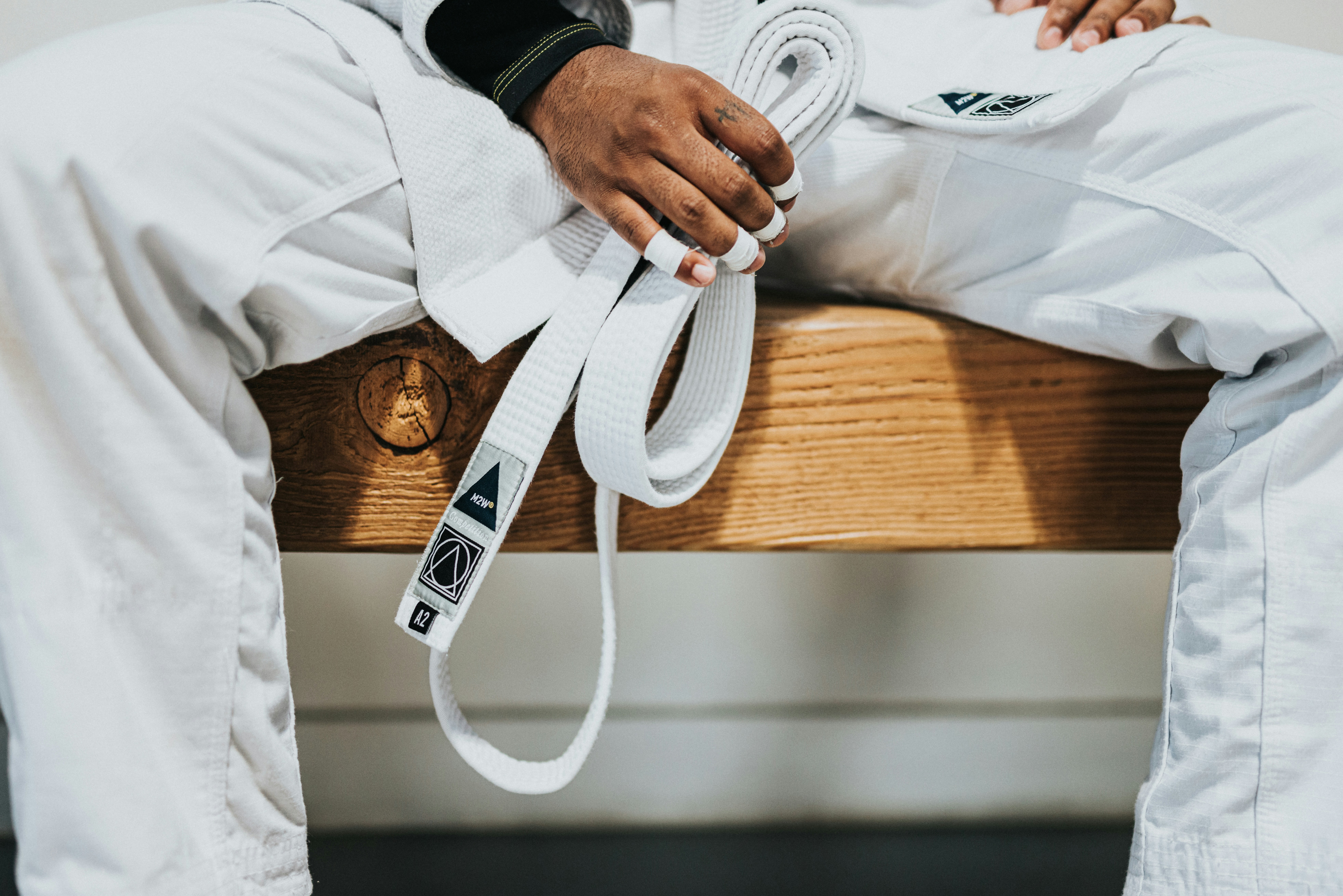Are you watching your martial arts community struggle to keep up with today’s fast-paced changes? This article is your guide to staying ahead in a competitive industry. It will explore essential strategies such as understanding the evolving market landscape and enhancing your learning environment through research and creativity.
You’ll learn how integrating live streaming can expand your reach and why adapting your business model can lead to long-term growth and resilience. By embracing these approaches, you’ll unlock the potential to transform challenges into opportunities, securing the success of your martial arts business.
Key Takeaways
- Martial arts businesses thrive by adapting to market trends and evolving consumer interests
- Diversifying offerings and using technology enhances engagement and attracts new students
- Financial stability for martial arts studios stems from multiple revenue streams and flexible pricing
- Personalized marketing strategies and strong community involvement build trust and expand outreach
- Continuous innovation in teaching and business practices ensures longevity in the competitive martial arts industry
Understanding the Changing Market Landscape in Martial Arts

The martial arts industry is experiencing a dynamic shift. Owners must now recognize changes in consumer behavior, including an uptick in searches related to “email marketing” as a key part of any robust marketing strategy. They’re also facing new competitors and fitness alternatives influenced by icons like Bruce Lee, contributing to a more diverse market.
Meanwhile, global events have left an indelible mark on the industry, necessitating an understanding of local market demographics and an astute eye for regulatory and compliance changes. Identifying these elements and the increasing importance of anti-bullying initiatives can help businesses remain agile.
With the right tools, including innovative software applications, martial arts businesses can master these market changes for continued growth and success.
Recognizing Shifts in Consumer Behavior
As the market evolves, martial arts business owners are learning that it’s not just about earning a black belt; it’s about understanding customer needs. They are seeing a trend where more clients search for strength training and fitness programs, necessitating a shift in advertising strategies.
Today’s successful dojo has to stretch its budget in new ways, investing in areas that resonate with a health-conscious audience while still honoring the traditional values that draw students to martial arts.
Identifying New Competitors and Fitness Alternatives
In the martial arts business, staying ahead means recognizing the rise of innovative competitors and diverse fitness options. Owners are finding that clients increasingly prioritize health, leading to a surge in mixed training programs that combine traditional martial arts with stress-reducing, high-energy workouts.
To keep up, they’re incorporating referral marketing strategies to reach new audiences and using email address lists more effectively to foster ongoing engagement.
By adapting to the ever-shifting fitness landscape, martial arts businesses can thrive amidst the competition.
Maintaining a robust presence in this evolving market calls for a fresh look at marketing approaches, including the use of email address lists to share health tips, stress management resources, and the benefits of martial arts training, underpinning a modern referral marketing strategy. Here’s what one can expect when embracing these changes:
- A broader client base as interests in fitness variety take root
- Increased engagement from well-executed email campaigns
- Enhanced community reputation through effective referral incentives
The Impact of Global Events on Martial Arts Businesses
When global events turn the world upside down, martial arts businesses are not spared. From the moment a Google search reveals a spike in self-defense interest during uncertain times to when a dojo in Thailand turns to gamification to keep students engaged, it’s clear that innovation is crucial.
These moments demand strong industry leadership to navigate rough waters and secure a dojo’s future by always staying one step ahead.
- Increasing reliance on digital platforms for student engagement and training
- Incorporating game-like elements through gamification to maintain motivation
- Leveraging search trends in Google to align with the current interests of potential clients
- Expanding globally, with schools like those in Thailand adapting to serve both local and international students
- Emphasizing leadership development within the martial arts curriculum to build resilience
Assessing Local Market Conditions and Demographics
Business owners must scrutinize local market conditions and demographics to stay relevant in the diverse martial arts world, from taekwondo to judo. By employing targeted advertising tailored to community interests and demographics, they harness the power of online advertising to connect with prospective students.
This approach, grounded in innovation and accessibility, allows owners to craft appealing messages that resonate with their audience’s specific wants and needs, giving them an edge in a competitive ecosystem.
Navigating Regulatory Changes and Compliance Requirements
Martial arts business owners face challenges when navigating the sea of regulatory changes and compliance requirements. With the rise of online platforms, regulations surrounding digital content are crucial. A dojo might utilize the World Wide Web for marketing or instructional videos, so staying informed about digital copyright laws is essential.
As artificial intelligence becomes more integrated into data analysis for businesses, including those offering muay thai or sparring classes, understanding privacy laws related to data becomes paramount.
By keeping abreast of these laws, martial arts businesses protect themselves and their students, fostering a trusted environment where everyone can focus on the art form.
Analyzing Industry Trends and Customer Needs

In the swiftly changing landscape of martial arts, staying on top of current trends is key to nurturing a successful business. Owners must tailor their programs to cater to diverse age groups and skill levels, integrating health and wellness while placing a solid emphasis on self-defense and personal safety.
Social media insights and direct customer feedback can help a martial arts brand bolster client confidence and discipline, thereby enriching the experience of traditional and modern practices like boxing.
These targeted strategies ensure the dojo aligns with evolving market needs and customer expectations.
Current Trends in Martial Arts Training and Instruction
Martial arts training and instruction are diversifying, with many schools optimizing their online presence to improve their search engine ranking and adopting modern marketing strategies such as podcasting to share insights.
Students today are comparing prices and values like never before, requiring businesses to be transparent and competitive.
A well-crafted call to action can make all the difference in converting interest into membership, ensuring that each interaction, both online and offline, counts towards building a loyal community:
- Transparent pricing structures to meet the financial expectations and capabilities of different demographics
- Effective use of search engine optimization to reach potential students where they are most active
- Engaging podcast content that offers added value, building a community, and showcasing expertise
- Call to action prompts that are clear, compelling, and guide potential students through the enrollment process
Addressing the Needs of Different Age Groups and Skill Levels
Martial arts businesses are finding success by tailoring their offerings both online and offline to cater to varying knowledge levels and age groups. They’re using tools like QR codes for easy access to class information and SMS alerts to keep members updated.
This personalized approach ensures that everyone, from young children engaging in their first karate class to older individuals seeking Tai Chi for its health benefits, receives the information and attention they need to grow in their practice.
Incorporating Health and Wellness Into Your Programs
Within the sphere of martial arts, the teaching method now extends beyond grappling and striking techniques to include health and wellness programs that enhance the overall training experience.
Martial arts schools are progressively embedding wellness principles into their curriculum, recognizing it as a vital element of customer service that caters to the growing demand for holistic fitness solutions.
This approach not only elevates the students’ learning journey but also fosters a community that values sustained well-being as a core part of martial arts practice.
Emphasizing Self-Defense and Personal Safety Training
In today’s world, where personal safety is a prime concern, martial arts studios are placing a stronger emphasis on self-defense and safety training. By weaving combat sports techniques with practical judo and weapon defense skills, these businesses offer a compelling return on investment for students looking to bolster their confidence and security.
A martial arts studio that highlights these aspects in its curriculum not only meets a critical customer need but also stands out in a crowded marketplace.
Key steps a studio can take to emphasize self-defense and personal safety include:
- Integrating real-life scenarios into training to enhance situational awareness and response.
- Providing specialized workshops that focus on the defensive use of everyday items as weapons for protection.
- Offering programs across various age groups and skill levels to ensure comprehensive community safety benefits.
Gathering and Applying Customer Feedback
In the face of an evolving market, martial arts businesses are turning to their websites not only as a marketing tool but also as a platform for personal development. They hinge their growth on feedback, realizing that the suggestions of students who seek exercise, personal growth, and motivation can catapult a studio toward excellence.
Incorporating technology to glean insights from this feedback, owners can fine-tune their programs and services to meet rising expectations, creating an empowering environment that inspires loyalty and sustained patronage.
- Regularly updating their website based on user feedback to improve the user experience and provide valuable content.
- Utilizing customer surveys to identify trends in exercise preferences and motivation techniques that can be incorporated into training programs.
- Implementing technology solutions such as online portals for easier feedback collection and analysis, ensuring that personal development goals are met.
Diversifying Your Martial Arts Programs and Services

Businesses are expanding their offerings to stay competitive and visible in the martial arts industry. Introducing new styles and disciplines draws attention from a diverse clientele, while online and virtual training options accommodate flexible learning preferences.
Programs geared towards youth and families, collaboration with schools, and diverse community organizations enhance social media marketing reach.
Moreover, adding fitness and wellness classes can provide a more comprehensive suite of services to meet students’ evolving needs.
Introducing New Styles and Disciplines to Attract Clients
In the evolution of martial arts businesses, introducing new styles, such as kickboxing, can serve as a magnet for a broad range of clients, significantly impacting local search visibility and attraction. This diversification meets the goal of refreshing a studio’s brand while addressing the growing demand for variety in fitness and self-defense.
Studios that respond to these market changes not only demonstrate adaptability but also create new avenues for revenue and client engagement.
Offering Online and Virtual Training Options
Embracing the digital age is vital for martial arts businesses seeking a competitive edge. By launching a mobile app, studios offer Aikido enthusiasts and others the flexibility of online and virtual training options, catering to the needs of a tech-savvy generation. Particularly focused on historical insights and practical technique demos, these virtual platforms seek feedback for continuous improvement.
Through smart content creation, studios can disseminate knowledge and connect with students beyond traditional dojo walls, reinforcing the understanding that martial arts evolve alongside technology.
Developing Programs for Youth and Families
To cater to the growing family demographics in mixed martial arts, studios are developing specialized programs offering a seamless blend of kick techniques and foundational moves for kids and adults. These programs not only enhance the dojo’s search engine optimization through family-friendly keywords but also improve the user experience by providing age-appropriate training in a shared environment.
Martial arts businesses that emphasize this family-oriented approach often see an uptick in engagement on media platforms. Parents and children alike share their positive experiences online, drawing in new members through powerful word-of-mouth marketing.
Collaborating With Schools and Community Organizations
Collaboration with schools and community organizations offers martial arts businesses a unique way to share their philosophy and promote physical fitness. A sensei can bring a taste of combat sport and discipline to physical education curriculums, reinforcing important life skills and providing a different perspective on wellness.
By creating a dedicated landing page on their website for educational partnerships, these businesses open a direct line to those interested in integrating martial arts into broader societal contexts. They demonstrate how their services go beyond teaching punches and kicks to build healthier communities.
Adding Complementary Services Like Fitness or Wellness Classes
In response to the evolving interests of martial arts enthusiasts, adding fitness or wellness classes has become an astute move for business owners. Incorporating yoga sessions, for example, offers a complementary tool that enhances flexibility and mind-body awareness, traits essential for disciplines such as jeet kune do.
As part of their digital marketing strategy, studios highlight the benefits of these added services, distinguishing their sports offerings and driving engagement through a holistic approach to martial arts training.
Conclusion
Martial arts businesses flourish by responding adeptly to evolving market dynamics, like shifting consumer behaviors and the rise of diverse fitness alternatives. Implementing up-to-date marketing strategies, such as leveraging social media and embracing technology for online engagement, positions these businesses at the forefront of industry trends.
By diversifying services with innovative training options and flexible memberships, they successfully cater to a wider audience and secure financial growth.
Remaining agile and customer-focused keeps martial arts businesses competitive, ensuring their long-term success in a constantly changing market.


